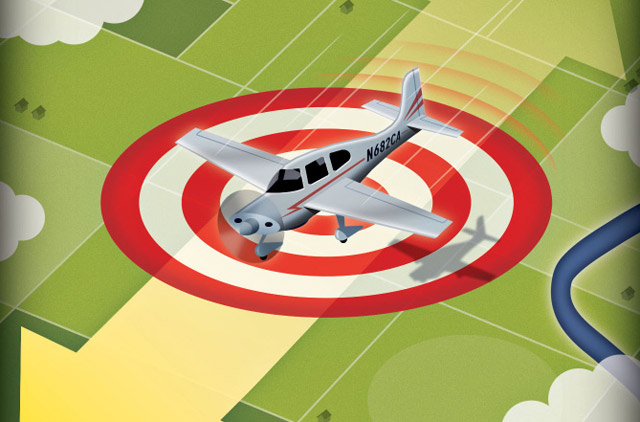P&E Proficiency
How did I get here?

Insight into single-pilot resource management
Musician David Byrne isn’t a pilot, but lyrics from his most famous song, Once in a Lifetime, could have been inspired by one: “And you may ask yourself, what is that beautiful house? Where does that highway go to? And you may ask yourself, am I right? Am I wrong? My God! What have I done?”
Knowing where you are, where you came from, and where you are going is a core tenet of good airmanship. When pulling over to reprogram the GPS or study a chart isn’t an option, maintaining that awareness is key. The FAA has even made an unnecessarily complex and obscure term for the whole thing—single-pilot resource management.
To the talking heads that develop these concepts, the idea is simple. It’s the skillful application of situational awareness, task management, automation management, risk management, aeronautical decision making, and terrain awareness. Piece of cake, right?
This language unnecessarily complicates what is an easy concept, if not a difficult practice. Know where you’ve been, where you are, and where you’re going by using all your tools effectively. That’s good single-pilot resource management.
Develop meaningful methods by analyzing a typical flight. The high stress points are taxiing at an unfamiliar airport, the departure phase, and the arrival phase. Knowing this, it makes sense to focus on how to better manage those specific phases of the flight.
Here are five strategies to help you improve your single-pilot resource management:
1. Know how to use your equipment
Knowing how to program direct-to in your GPS isn’t exactly an expert-level understanding of your panel. Push yourself beyond the basics, whether it’s a GPS, primary flight display, or autopilot. The most efficient way to learn is through home training programs, books, or simulators. If none exist for your set-up, hook up ground power and run through various scenarios. When you fully understand the buttonology and logic, bring a friend along on a nice VFR day to act as your eyes while you make sure it behaves in the air as you expect it to.
Two areas that cause constant frustration for pilots are vertical navigation and altering flight plans, especially after you’ve activated vectors to final on an ILS approach and ATC gives you new routing. When this happens, revert back one step of automation, which usually means flying direct-to, or doing certain tasks manually.
2. Set up everything prior to takeoff
The last few minutes before departure will make or break the few minutes after. Carefully and methodically set up your radios; navigation equipment; auto-pilot, including any altitude preselect; and charts. If you’re flying a legacy panel, make sure you have your charts set and your radios tuned—both communication and navigation.
3. Lay out charts in order
Putting your charts in order is something we all should have learned in private pilot training, but many of us never put into practice. It’s worth doing. Whether you use paper or electronic charts, take the time on the ground to set them up, and put them in order if possible. With electronic that means ensuring everything is downloaded and current, the flight plan is loaded—and if the application allows, placing the departure airport diagram, departure, arrival, destination, and alternate in order. With paper, fold the charts and lay them in order. Start with the airport diagram, work to sectionals or low-altitude en route, then tab the appropriate approach charts in the book.
4. Have a plan for your next 10 minutes
Whether you’re about to taxi, land, or are just cruising along, make a plan for the next 10 minutes, and update it constantly throughout the flight. During taxi, for example, get the diagram out before you call ground control. Then call, write down the instructions, read them back, and make a plan.
Before you take off, know what you’ll do in an emergency, what heading and altitude you’ll fly if everything goes well, and how long it will take you to get to your next fix or two. If you continually think 10 minutes ahead and make a rough mental sketch of that plan, not much will be a surprise.
5. Use all your assets
Flying an airplane should be never be scary or fear-inducing, especially when it’s the straight and level kind. A handy way to keep it that way is to ease the workload by using every possible asset. Get creative with this. Asking your friend/spouse/kid to hold a chart or a pencil and paper should be a given.
Teach frequent passengers how to tune radios or set the altimeter. Have them grab charts from your bag, help you navigate, and look for traffic.
Use air traffic control to your advantage by asking for vectors to unknown fixes, for frequencies you can’t find, or for continued help finding other airplanes.
And, of course, prioritize. “Fly the airplane” should always be written in bold at the top of every plan, strategy, and contingency.
Email [email protected]


